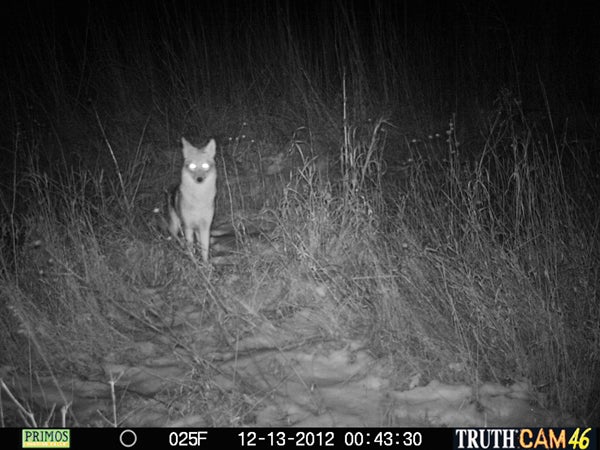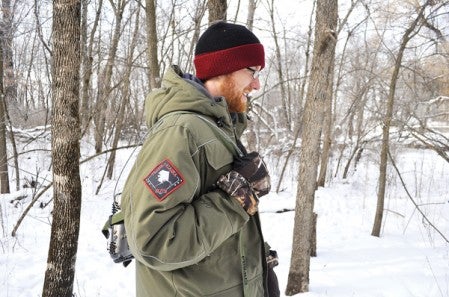Capturing the wild
Published 8:00 am Sunday, January 13, 2013

One of the trail cameras caught more than just deer lately. It caught a coyote investigating in the Jay C. Hormel Nature Center. Photo submitted
Nature Center trail cameras take a peak into the hidden wildlife at the popular park
John Duren knows the best way to get his subjects to pose for a photo: put a deer carcass out.
Duren, who has worked for the Jay C. Hormel Nature Center over the past two years, was the spearhead behind a nature center project to document wildlife over the past year by setting up trail cameras throughout the park.
“We had at the most three trail cameras out here,” Duren said. “They had been at various spots throughout the nature center. We tried to get a mix between woods, prairie, the south end and north end.”

John Duren carries a trail camera through the Jay. C. Hormel Nature Center. Trey Mewes/trey.mewes@austindailyherald.com
The idea came soon after Duren started working full-time at the nature center in 2011.
“I heard a few comments from people saying, ‘Well, there’s only deer out there,’” he said. “There’s more than that, you just have to look for it. I really wanted to see what was out there, so I could tell people, definitively, this is what we have, this is what we’ve seen.”
Starting in mid-December in 2011, nature center employees collected deer carcasses that were hit by cars to put at various spots throughout the area. Employees would then position cameras nearby on trees, lower to the ground, to capture whatever animal they saw.
And the animals came. Gray foxes, red foxes, opossums, raccoons, skunks, even coyotes, which nature center employees knew lived on the northern edge of the property.
“We know a lot about things that come in during the day,” said Larry Dolphin, executive director at the nature center. “A lot of animals are nocturnal. It was just more or less the curiousity of finding out what might be coming in at night.”
The deer carcass helped attract carnivores, scavengers, and other animals looking for meals, especially during the winter. The trail cameras were first used to take digital stills of the animals that came into the area, but Duren later placed cameras around to take video, so nature center employees could study animal interaction and behavior in the wild.
“It’s been fun to see all the things that people don’t normally see,” Duren said. “Even something like a raccoon, which you normally see, it’s fun to watch their behavior.”
Yet after more than a year, the project could come to a close as Duren is leaving the nature center to pursue wildlife photography, something he has worked toward for years. Dolphin said some cameras haven’t been checked for a while and may come down eventually.
Still, the project is considered a success and could lead to further research at the nature center.
“It’s satisfying to know that some of these animals are there,” Dolphin said. “You don’t ever seen them.”





